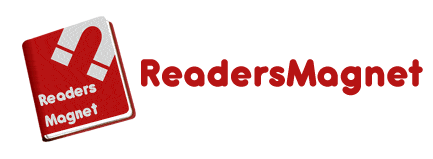The main objective of book marketing is to persuade customers to make purchases by providing them with multiple impressions of the product. The more diverse these interactions are, the stronger the implication and encouragement for a beneficial response. By using various combinations of promotional media, popular book publishers (and indie authors) advertise their novels out of necessity. Publicity, advertising, product marketing, and personal selling are the 4 components of a varied communication formula. The importance of every single factor depends on the subject, the design of your product categories, the marketing engagement of the author, and the targeted markets.
Many publishers rely on publicity as the main strategy, but sometimes, they directly discourage traditional advertising — particularly print advertising. This is because some publishers hold the false assumption that print ads are no longer sustainable or effective due to the widespread accessibility and efficiency of technology- however, it’s actually the opposite. On the contrary, traditional forms of print advertising retain their powerful reach and ability that once made them the main go-to strategy for all forms of advertising in the past, which reminds us that, even in 2020, print media isn’t a force to be overlooked or underestimated.
Choosing between one or the other is highly irrational in this instance, as in most situations. The influence of your campaign or book can indeed be maximized by a deliberate mix of traditional and web marketing because print advertising provides advantages that online advertising does not, and digital ads integrated with print ads are more effective than just one or the other. Systematic execution of print media can exponentially boost the advertising, income, and revenues of an author’s book.
For smaller publishing companies, technology has made it more efficient and cost-effective than ever to meet their potential purchasers via online ads. Convenience and interactivity are provided through blogs, social media platforms, and email promotions. However, conventional print ads preserve much of the benefits that have for decades made it the holy grail of marketing communications. The advantages of print advertising may overshadow even the highest-ranking digital platforms for publishing companies pursuing legitimacy, consistency, and a stronger link with their customer base.

- More engagement
The influx of info from the web has resulted in the average person skimming through endless flows of content, spending less than fifteen seconds on a website. On the contrary, subscribers of magazines are more dedicated to reading all of the content and are more likely to get your message.
2. Cost effectiveness
The simplicity of print advertising allows publishers to target niche markets with sharper precision, which is much cheaper than trying to reach the highest amount of people – a valuable characteristic of print ads.
3. Reusability
Unlike online articles or publications, magazine and other print ads can be passed from one person to another or donated to any kind of venue where readers enjoy magazines, offering a higher rate of exposure.
4. Dedicated readers are more likely to catch your message
Readers of print ad publications are more likely to discover and understand your message when it catches their attention since magazine advertising is the second most engaging and receptive form of media.
5. Offers credibility
Having your print ad displayed incredible publication grants you credibility yourself. By being associated with any reputable publication, the subscribed readers who regularly consume books of all kinds are sure to be receptive to a book endorsed by their favorite magazine or newspaper.
6. Longevity
Isn’t it interesting how waiting rooms and coffee shops still have some publications from the 2010’s all the way back to the early 2000s? No matter how much communication evolves, print media stands the test of time, whereas emails and digital ads may get lost in the sea of content.
7. Visibility
Print advertising has become something of a niche market with the majority of companies gravitating towards digital advertising. This means that there’s less competition in that particular market, and a higher chance for your brand to be more noticeable among the rest if marketed successfully.
8. Security
Although magazines and newspapers could possibly transmit germs and bacteria through physical contact, people online are generally more concerned about getting virtual viruses and spam from interacting with online banner ads, which is usually why most of us never want to click on one when we see them pop up on our screen.
9. It’s a constantly present market
There’s no doubt that print marketing is here to stay – no matter how digitized the world has become. Despite the evolving trends in online marketing, there’s no denying the fact that there will always be a market of people who still consume print media.
10. Target marketing
With print media, it’s a lot easier to tailor your message to your specific target market based on their demographic and psychographic qualities, and the fact that print ads are already somewhat of a niche market, to begin with, makes it even easier to communicate your brand to them when executed effectively.
With the world of technology evolving around us at an astoundingly exponential rate, it’s undeniable that many companies have failed to keep up with the increasingly competitive online environment. However, as communication solutions continue to progress, traditional ones continue to remain relevant as ever, just as they always have been.
In conclusion, one may draw a comparison between biological evolution and the evolution of communicative media. In the same way that Charles Darwin’s Theory of Evolution implies the adaptation of living beings to fit their environment, many forms of media have adapted to the influx of technology – however, print ads are so well adapted to their environment that they don’t need to evolve.
This infographic was made possible by www.readersmagnet.com.

Recent Comments